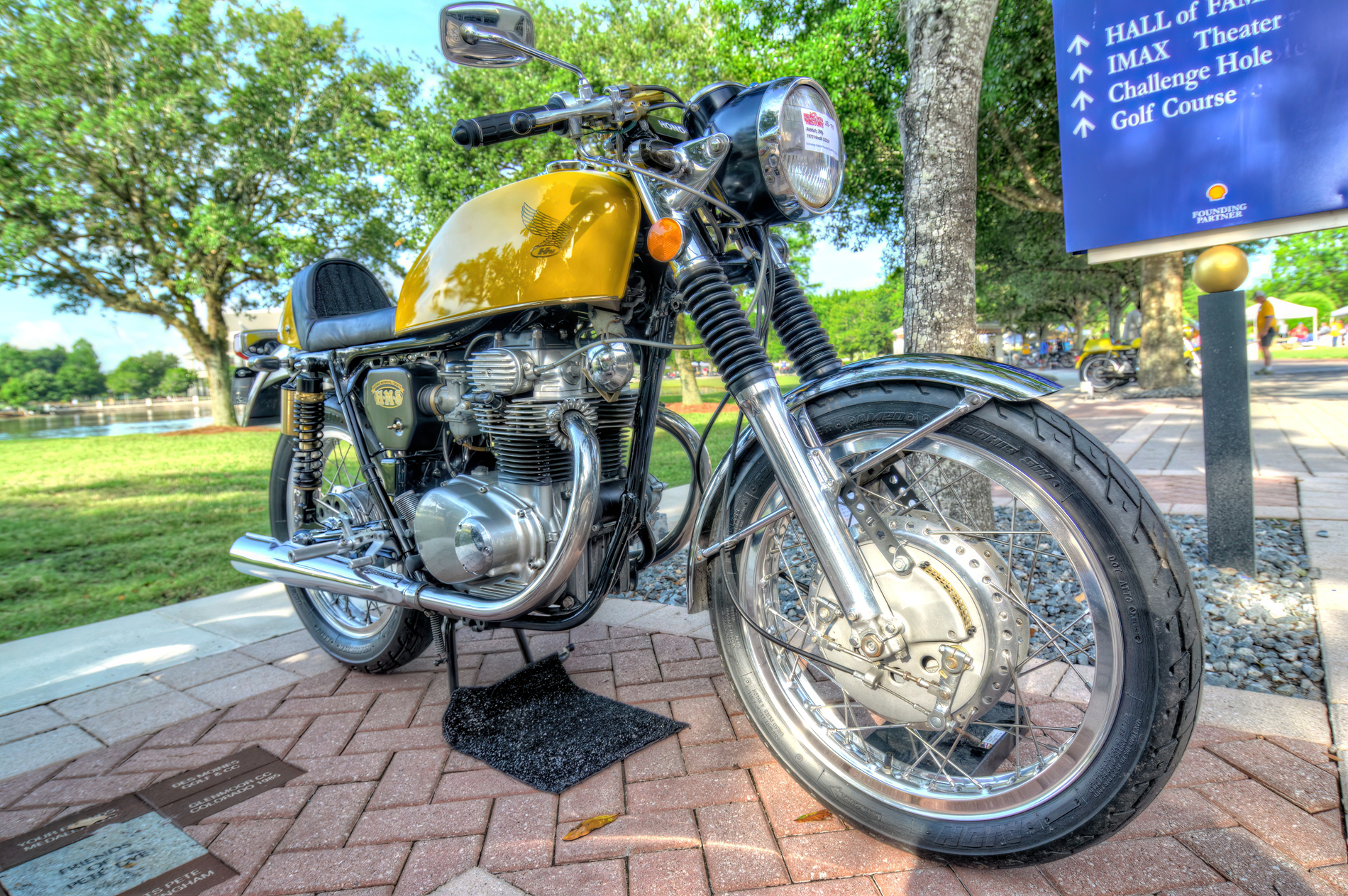
The 1972 Honda CB350 is a classic motorcycle known for its reliability, versatility, and performance. It was one of Honda's best-selling models during the early 1970s and played a significant role in popularizing motorcycles in the United States and other markets.
Produced from 1968 through 1975, the CB350 followed the hugely successful 250-305cc, CB72-77 and CA72-77. The shorter stroke, high revving engine made 36 claimed HP and is a favorite of vintage motorcycle racers today due to its tremendous potential for power upgrades. The 350 actually had on a 325cc displacement, but this on, equipped with larger pistons is a true 350.
Billy Aldrich built this bike using:
- Honda CB400 fuel tank
- Suzuki GT750 forks
- Honda CB550 trees, head light mounts and gaiterd
- CB-77 head light and instruments
Background
- Manufacturer: Honda
- Year: 1972
- Model: CB350
Specifications
- Engine: The 1972 Honda CB350 is powered by a 325cc air-cooled, four-stroke, parallel-twin engine. This engine produces approximately 36 horsepower at 10,000 RPM, making it both powerful and efficient for its class.
- Transmission: The motorcycle features a five-speed manual transmission with a wet multi-plate clutch, providing smooth and precise shifting.
- Chassis: The CB350 is built on a tubular steel frame, designed to be lightweight yet strong, enhancing handling and stability.
- Suspension: The front suspension consists of telescopic forks, while the rear features dual shock absorbers. This setup provides a comfortable ride and good handling characteristics.
- Brakes: The motorcycle is equipped with a front disc brake and a rear drum brake, offering reliable stopping power and improved safety over earlier models that had drum brakes on both wheels.
Design and Features
- Body Style: The Honda CB350 features a classic standard motorcycle design, characterized by its simple and clean lines, upright riding position, and functional layout. It has a teardrop-shaped fuel tank, a flat seat, and chrome fenders.
- Design Elements: The motorcycle includes distinctive features such as the Honda wing logo on the fuel tank, chrome accents, and spoked wheels. The design reflects Honda’s commitment to quality and aesthetics.
- Instrumentation: The CB350 includes a comprehensive instrument cluster with a speedometer, tachometer, and various indicator lights, providing essential information to the rider.
Performance
- Speed: The CB350 is capable of reaching speeds of around 100 mph (160 km/h), making it suitable for both city commuting and highway cruising.
- Acceleration: The parallel-twin engine provides smooth and responsive acceleration, ideal for a variety of riding conditions. It offers a lively and engaging riding experience.
- Handling: The CB350 offers excellent handling characteristics, thanks to its lightweight frame and well-tuned suspension. It is known for its agility and stability, making it a favorite among riders who appreciate a versatile and reliable motorcycle.
Historical Significance
- Market Impact: The 1972 Honda CB350 was one of the best-selling motorcycles of its time, helping to cement Honda’s reputation for producing high-quality, reliable, and affordable motorcycles. Its success contributed to the global popularity of Honda motorcycles.
- Engineering Innovation: The CB350 showcased significant engineering advancements, particularly in its engine design and overall performance. The parallel-twin engine was renowned for its smoothness, reliability, and ease of maintenance.
- Cultural Impact: The CB350 became a symbol of the 1970s motorcycle culture, appealing to a wide range of riders, from beginners to experienced enthusiasts. Its affordability and performance made it accessible to a broad audience.
You may purchase a print of the 1972 Honda CB350 in our Riding Into History d'Elegance 2016 online gallery.

